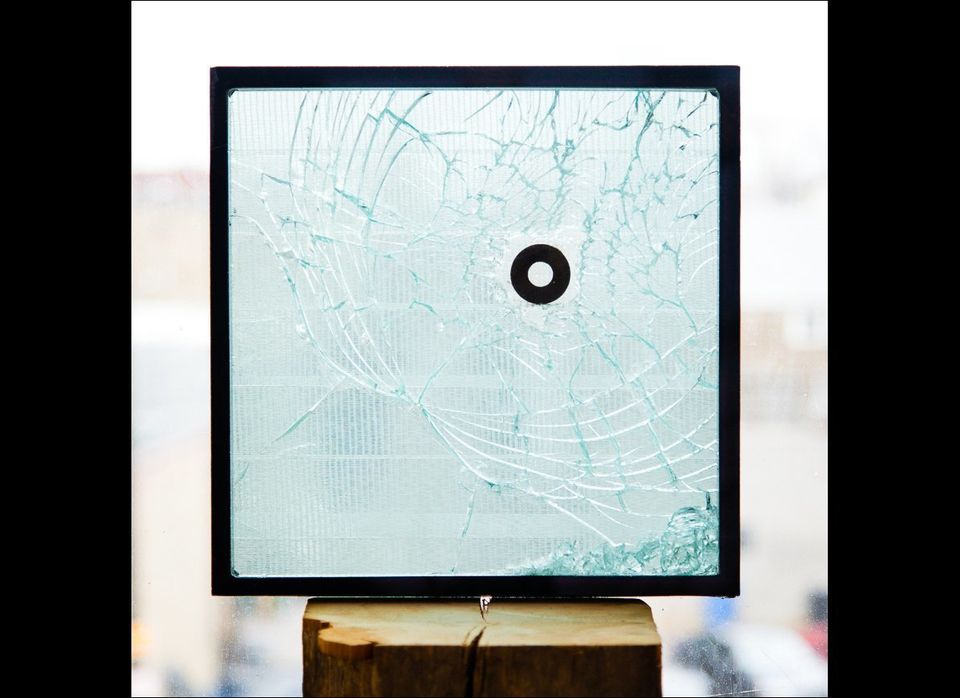One of the ways I learn to look at art is by talking with artists who make work that is very different from my work. If you're an artist, I cannot recommend this procedure enough. It will transform, again and again, your comprehension of the potential of your work. This post is a bit of a dialogue between me and the abstract sculptor Jesse Soodalter, a partial record of our correspondence.
Here's a detail of one of Soodalter's pieces:
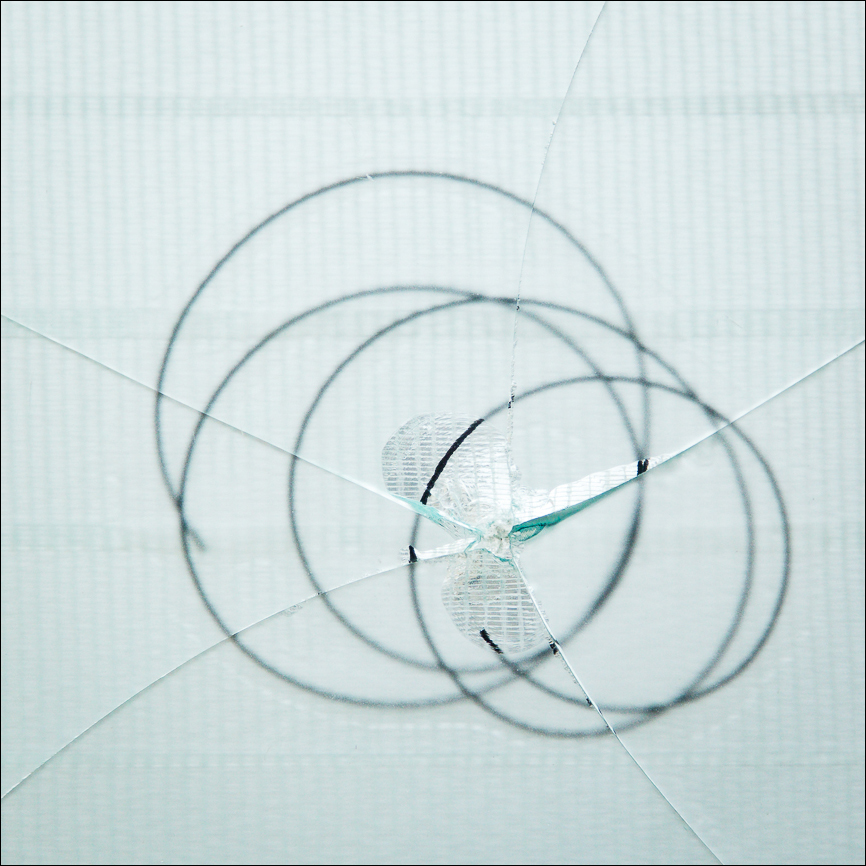
Jesse Soodalter, Indwelling, window sample, wire, duct tape, 12"x12", 2013
Let's give her the first word:
...although I've admired many different kinds of art, figurative and otherwise, for a million years, it wasn't until I had a kind of damascene realization of the power and, in some sense, legitimacy of abstraction that I began to conceive of myself as any kind of creator of visual art.
For me it was a specific Rothko. Having never really thought about him -- or indeed Abstract Expressionism at all -- much before, I wandered into a room at the Art Institute of Chicago and found myself faced with this painting, and out of nowhere it just reached into my chest and yanked, hard enough to make me choke up. It really was a single transformative moment, and it unroofed some profound sink of emotional and aesthetic responsiveness to abstraction that has been the absolute and literal making of me as an artist.
It took time to root, and lots of tentative and sheepish but infatuated gestures, before I found my voice, so to speak, with the object and wire pieces. That came very much with getting into Arte Povera too, that sense of a kind of profane sanctification of objects/spaces/events by the means of the artist's attention.
This is another piece by Soodalter:
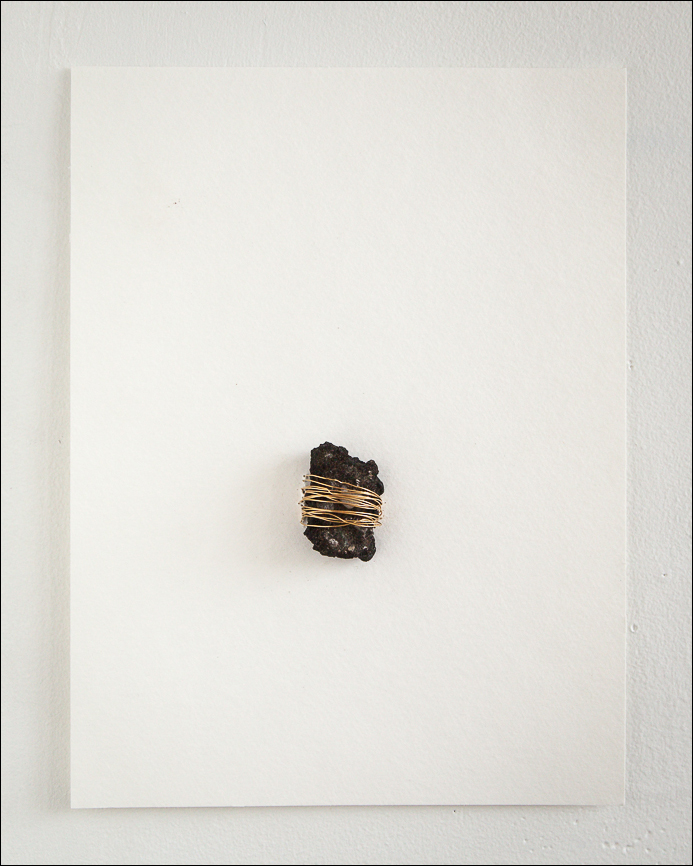
Jesse Soodalter, The Only Way Out is Up, found object (asphalt), wire, paper, 12"x9", 2012
I can talk with you very cogently about figurative painting. But I'm on uncertain ground when I talk about abstract art. I don't have a good sense of the terms of debate and discussion. But there is something that is so perfectly correct to my eye to this. Let me explain what I see:
There is the found object, pure matter, close to the alchemical prima materia -- raw, cruel, base, meaningless.
Then there is the first level of intervention by the artist, the wrapping of the object in a gold-colored wire. This wrapping is the sanctification of which Soodalter speaks. The eye of the artist perceives the object, the palm holds it, the soul blesses it -- and the fingers express the blessing with wire. The artist interacts with the object at the most visceral, physical level.
Then there is a second intervention, the fixing of the object to the board. This to me is the equivalent, by means of reason, of the first emotional-spiritual intervention. First the heart and hand absorbed the object, now the mind does too. The board is flat space, the cartesian plane, the page of text. The sanctified object becomes part of the map of the universe in the mind of the artist. It is set in its right place, here and not there.
This minuscule thing records the confrontation between the human presence and the universe: a confrontation characterized on the human side, for Soodalter, by fascination, love and ultimately, integration.
That's what I see in these humble materials. But part of the reason I see that at all in a jumble of stuff which I might otherwise overlook is that Soodalter has passed through the revelation of legitimacy. You are walking along, and you pass by her, and she holds up her hand and says, "Stop. Thou shalt look. This is art."
It is essential for the artist to have the revelation of legitimacy, to learn to make the assertion. You can make the assertion and still be wrong. But if you don't make the assertion, you can't be right.
Thus me. But this is a dialogue. Although Soodalter liked my analysis, she disagreed with it on a number of points. Here is her first disagreement:
...the two interventions that you describe, while I agree that conceptually they're independent or at least distinct, in actual act are one gesture. The object is literally sewn to the paper with wire, not wrapped and then affixed. As I say, it doesn't invalidate the distinctness of those two axes, but it is quite important to (my own vision of) the nature of the piece that the object is bound to the paper, and embellished in the binding, not decorated and then mounted. Does that make sense?
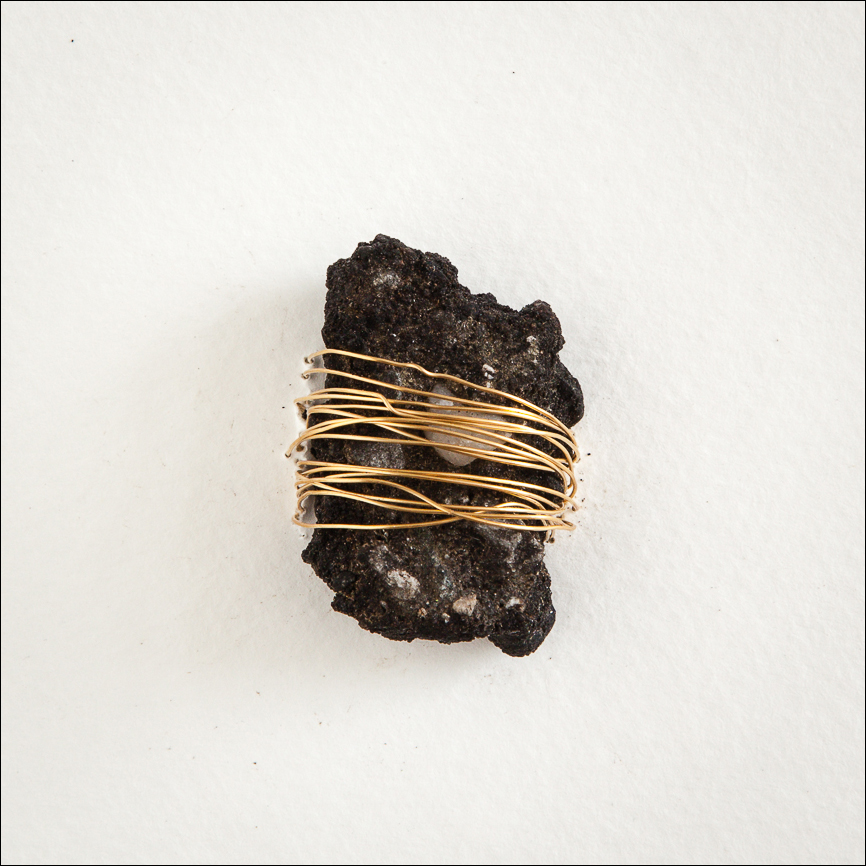
Yes, of course it makes sense. Thinking it over, I realized that my list of interventions was incomplete: I talked about 1. the wrapping of the object in wire, and 2. the fixing of the object to the paper. But there was a prior intervention, intervention 0: surveying a field of garbage, of rubble, Soodalter saw this object. This object spoke to her, and she spoke back to it. She pulled it from the trash, and said, "There is something important to this one." In one sense, this is really the only important intervention; everything else merely modifies that initial recognition.
Now here is Soodalter's second disagreement:
The wire is as much there to constrain as to exalt, there's a sharpness and a punitive edge that is very much intrinsic to the piece -- and to all the wire work, really; the diametric polysemy of wire is a huge part of my obsession with it.
Polysemy, by the way, is art-theory talk for the same concept I'm pursuing with this blog post overall. It's a term for a sign that has multiple related meanings; Soodalter, as I understand her, and I could be wrong, uses the phrase "diametric polysemy" to suggest that wire means some things, and other related things which are actually opposites of the first things -- in this instance, the pinioning cruelty she describes is opposed to the benedictive gentleness I described.
What it amounts to is that you could say I got my entire interpretation wrong -- I misunderstood how Soodalter made the work, I misunderstood the significance of how the work was made, and also I took the meaning of the work for the opposite of what Soodalter thought it was about.
You could say I got my interpretation wrong; but this is not the best way to put it. Soodalter, after all, liked my version. She liked her version too, and her version contradicts my version, but she herself didn't reject my version. What does this mean?
Let's consider the difference between a vector and a vector field.
A vector is a mathematical construct which includes magnitude and direction:
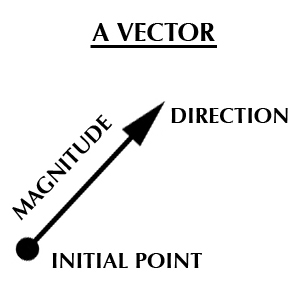
They're very handy for representing things like forces. A force applied to a cart, for instance, gives it a push, a push with both magnitude and direction. A vector is well adapted for representing this situation.
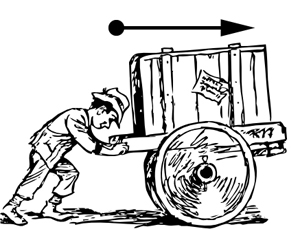
Let's say instead of Zeno pushing his pushcart, though, we're talking about an electromagnet.
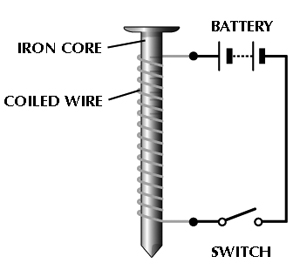
Like Zeno, an electromagnet produces force. Unlike Zeno, its force isn't a single vector tied to a single location in space (the handlebar of the cart). The electromagnet's force influences everything around it. For every point in space surrounding the electromagnet, a vector exists, waiting to act on amenable matter. This phenomenon is called a field. In this case, it is a vector field.
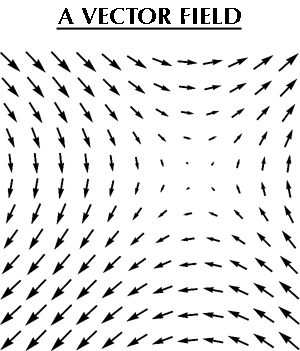
The claim I am seeking to advance here is that the experience of art is more like a field than it is like a vector. Art itself is more like the electromagnet than it is like Zeno. An adequate art object will mean the same thing to all viewers. A really impressive art object will mean many things to many viewers. Its purpose is not to create a single meaning, but to create a kind of aesthetic matrix which supports the discovery of meaning. Not just any meaning -- but meaning of a sufficiently dense and profound variety to prove rewarding to the effort a viewer puts into looking at it.
My interpretation of Soodalter's sculpture was like one vector, and Soodalter's interpretation of her sculpture was like a second vector. They didn't match up at all because we were standing in different places relative to the work. The work was powerful enough to generate a vector field around itself, waiting for a viewer to wander into it. This vector field was of a quality sufficient to inspire thoughts which were important to me, and different thoughts which were important to Soodalter. It won't inspire thoughts in all people, just as not all matter can receive a push from the electromagnetic force generated around an electromagnet. That's fine. Different people have different tastes, and this is one way of phrasing that. It's using lots of words to say "abstract art talks to some people and not to others." This distinction doesn't make anyone better, or worse, only different.
---
Jesse Soodalter online: http://www.jessesoodalter.com/
Soodalter artwork photography:
Kurt Kramer: Indwelling, The Only Way Out is Up, Untitled (for Tessa), Shelter, Self-portrait (Sydney)
Jesse Soodalter: Uncertainty of the Terrain, Retrospective disinhibition
Ryan Nanni: Untitled (The land 1)
Image Sources:
Cart: http://www.clipartlogo.com/image/cart-carrying-a-crate-clip-art_368258.html
Electromagnet: http://commons.wikimedia.org/wiki/File:Electromagnet1.png
Vector field: http://en.wikipedia.org/wiki/File:VectorField.svg

